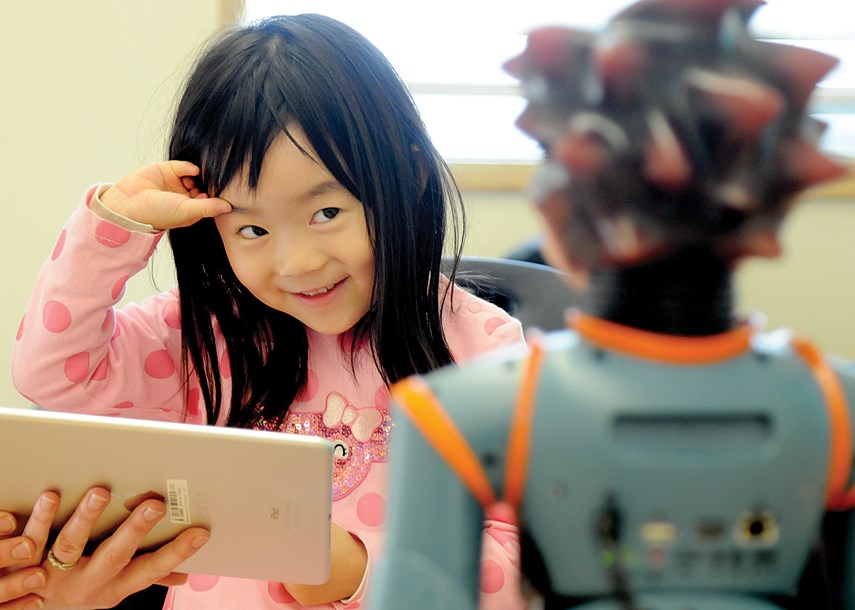One of the newest additions to West Vancouver’s teaching roster stands only a couple of feet tall but has some powerful lessons to impart.
Among them: how to recognize emotions, how to behave in complex social situations and how to take a break and calm down when needed.
His lessons are very, very predictable – a plus for students who are on the autism spectrum. He speaks slowly and carefully.
And at the end of the school day, he gets turned off and put away.
Meet Milo, the teaching robot, who’s helping to teach social skills to kids with autism.
Introduced last spring, Milo is in the second year of a pilot program being run this year in three West Vancouver schools.
Twenty-five students have twice-weekly 45-minute sessions with Milo, who gets his commands from an iPad operated by a learning support teacher.
In a recent session at Westcot Elementary, a young girl in kindergarten followed Milo through a series of movements, mirroring his actions as he moved his arm, turned his head and danced.
In other sessions, a student might practise a more complicated social skill like taking turns on a playdate with a friend, or how to behave at a birthday party.
“Some of the activities Milo does are actually fairly complicated social situations,” says David Platt, district administrator with the West Vancouver school district. For instance, “How do you receive a gift? Kids struggle with that.” Milo helps students break down the steps, said Platt.
The robots first got introduced in West Vancouver after Superintendent Chris Kennedy saw them in action at a technology expo. Techniques used by the robots are all “well-researched documented techniques in terms of autism support,” said Platt.
While Milo has been used in the U.S. for a few years, West Vancouver is the first school district in Canada to try out the robots.
The school district rents five of the robots at a cost of $30,000. If any of them breaks down, they get replaced.
So far, Milo has been a welcome addition, says Platt. This year the robots are being used in three elementary schools – Westcot, Bowen Island and Caulfeild – as well as two secondary schools.
“There’s been huge buy-in in terms of working with Milo,” he said. “A lot of our kids are so into technology. . . He’s this cool robot.”
While Milo is used as an “intermediary” in twice-weekly sessions, it’s still the teacher who is actually running the lesson.
But the robot presents certain advantages. “We know kids with autism have difficulty making eye contact with other individuals,” said Platt. “They seem to have much more contact with Milo.”
The robot has 26 motors in his face, which help with modules like the one on understanding facial expressions. Milo can show students the difference between looking angry, upset or worried, for instance.
He also has a camera in his eyes, and a screen on his chest, so students can mirror expressions then see the result.
Platt said one benefit he’s seen is that students seem to be able to take what they’ve learned from Milo and quickly apply it to other situations.
“The generalization process happens much more quickly using Milo,” he said.
West Vancouver is the first school district to use the technology but it likely won’t be the last. Platt said since going public with Milo, he’s already spoken to other school districts in both B.C. and Ontario who are interested in the robot.



